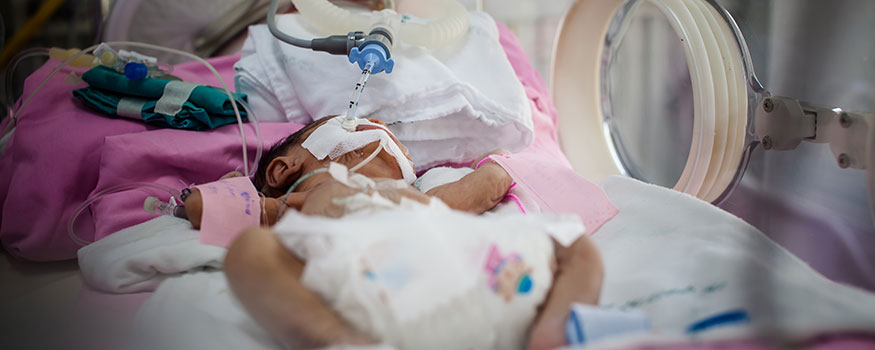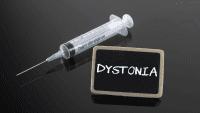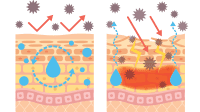Medications administered intravenously in the neonatal intensive care unit (NICU) are often less than 3 mL in volume. However, guidelines from manufacturers of neonatal peripherally inserted central catheter (PICC) lines recommend the use of 5-mL syringes or larger to prevent potential rupture and/or fragmentation of the indwelling catheter because of high pressures. This article reviews the evidence related to the safe use of syringes of less than 5 mL with neonatal PICC lines and provides medication administration procedures that have been implemented in our facility for volumes less than 3 mL.
Policy versus practice: A discrepancy revealed
One of the unique needs of infants in the NICU is the administration of small-volume medications based on the infant’s weight. PICC lines are used in the NICU when long-term intravenous (IV) access is needed. In our facility, a discrepancy between our policy and what was actually being performed in our practice environment was identified that was specific to medication administration via PICC lines. Current practice at our facility requires medications to be sent from the pharmacy in a syringe appropriate for the volume of the medication to be administered. Thus, the majority of medications arrive in either 1-mL or 3-mL syringes for infants with PICC lines. However, our PICC policy states that syringes smaller than 5 mL or 10 mL are not recommended. Additionally, our facility also uses prepackaged 3-mL saline flush syringes. This issue was further complicated after a staff in-service meeting that reinforced the policy that only 5-mL syringes were to be used with PICC lines.
A review-of-practice survey reveals inconsistency
The implementation of guidelines for practice became increasingly difficult at our facility once an inconsistency between current policy and staff practice was noted following a review of bedside practice among NICU registered nurses (RNs). I administered an anonymous survey asking respondents the following question: “When using a PICC line, how do you administer an IV medication in a 1-mL syringe?” A total of 16 RNs (<20%) responded to the survey. Some RNs told the survey administrator that they chose not to participate in the survey because they did not provide direct care of infants with PICC lines or because they did not know the correct answer.
The survey results demonstrated an inconsistency in the method in which medication administration via PICC lines was being performed. The answers that were received included the use of a syringe pump, transfer of the medication to a larger syringe, or IV vein push. Most staff identified two particular methods used to administer medications via a PICC line. The first method was to use a syringe pump to administer the medication, the assumption being that the syringe pump was a safe method of giving the medication because the pump would alarm if the pressure exerted is too high. The second method was transfer of the medication to a larger 5-mL syringe for subsequent medication administration.
Surveying facilities in the same geographic area
To determine what practices are used for medication administration via PICC lines in our geographic area, I sent queries specific to medication administration of less than 1 mL via PICC lines via email and phone call to NICUs within the same geographic area. Four facilities responded, reporting the following practices:
- Transfer of medication to a larger syringe
- Use of medication tubing to hold the medication volume
- Belief that the volume of medication is too small to adversely affect a PICC line
- Use of a syringe pump with an adjustable high-pressure limit alarm, and
- Pharmacy-dispensed medications in a 5-mL syringe.
Reviews of the literature and practice guidelines
I performed a review of the literature, clinical practice guidelines, and manufacturer guidelines. Recommendations by Gustafson and Covidien for the Argyle catheters that are used at our facility state that PICC catheter maximum pressures are not to exceed 25 psi. PICC manufacturer guidelines also recommend the use of syringes that are 5 mL or larger because smaller syringes can result in very high pressures related to the smaller diameter of the syringe barrel. Medfusion 3500 Syringe Infusion Pumps used at our facility were found to have alarm settings above the maximum PICC pressure recommendation for a 1-mL syringe, but within the recommended range for the 3-mL syringe.
Petit and Wyckoff neonatal clinical guidelines for PICC lines state that smaller syringes can generate very high pressure that may rupture and/or fracture the catheter, and infusion pump occlusion sensitivity should never be set greater than 25 psi. A retrospect study by Liu and colleagues of PICC lines in the NICU showed mechanical complications to be the most common reason for the removal of catheters.
Literature review results were examined to determine best practice. The review of evidence showed IV push with a 1-mL syringe to be contraindicated with PICC lines because of the risk of catheter rupture from high pressures. Specific to our facility, the use of a 1-ml syringe with a syringe pump was contraindicated because of the manufacturer-fixed high 35-psi alarm limits. However, the 3-mL syringe was not contraindicated for use with the syringe pump alarm because of the manufacturer-fixed high 16-psi alarm limits.
Multidisciplinary team review
A multidisciplinary team was formed to discuss options, based on the review that had been conducted. I was part of the team that included a pharmacist, a neonatal nurse practitioner (NNP), a member of the NICU PICC team, and a bedside RN. We reviewed five options for medication administration.
- Medication dispensed from the pharmacy in an appropriate-size syringe for infants with PICC lines. However, compromised medication dose accuracy is a potential complication for small-volume medications in a 5-mL syringe. Erstad has shown a proven correlation between reduction in dose accuracy as syringe volume size increases. The most reliable way to measure a medication is to use the smallest syringe volume size appropriate to give the medication dose. Transferring small medication volumes in the NICU at the bedside to a larger syringe volume size compromises accuracy because of loss of medication in the syringe’s dead space; it also compromises sterility. Syringe transfer at the bedside also presents a safety issue because of the potential for unlabeled syringes.
- Dilution of medication for administration in larger-volume syringes, which also compromises accuracy and sterility.
- Extension tubing to hold the medication volume. This process required increased line access with new extension tubing used for administration of multiple medications in a 1-mL syringe. Additionally, extension tubing used in the NICU typically has fill volumes of 0.5 mL or less, which requires multiple extension tubing to hold the medication volume. The increased risk for infection is a concern with the extension tubing method.
- A closed delivery system using a stopcock. The interdisciplinary team determined that the increased administration complexity and need for uniformity among all hospitals within our system made it undesirable at our facility.
- Purchasing syringe pumps with alarm settings within recommended PICC psi limits. This was not a feasible immediate fix at our facility related to costs and the time required to pursue approval for this expense.
We decided to use the third option: prime extension tubing for small-volume medication doses less than 1 mL, use a syringe flush to finish priming the extension tubing if needed, and administer the medication via the syringe pump, infusing the 3-mL flush syringe. The process for medication administration with a 3- mL syringe would be to use the syringe pump to infuse the medication and any flush required. Our unit-based council agreed with the interdisciplinary team’s decision. NICU RNs at our facility were notified via an email outlining the approved administration process, which stated: “When giving a medication in a 1-mL syringe to a baby with a PICC line, prime extension tubing with the entire medication. You may need more than one extension tubing to give the entire medication.”
Meeting unique needs
My evaluation of practice showed that further clarification was needed to determine if the small volumes given to infants with a 1-mL syringe cause a problem with PICC catheter integrity. Based upon the findings of the evaluation, changes were made in our facility, including updating the policy to show the recommendations made by the committee, changing from extension tubing with the fill volume of 0.2 mL to 0.4 mL (which decreases the number of extensions needed), and continued monitoring for the presence of PICC bloodstream infection by the central line-associated bloodstream infections committee. Future considerations include staff awareness of their role in the selection and use of patient care equipment and for PICC line manufacturers to have greater awareness of the unique needs of the neonatal population.
Leora A. Patton is a staff nurse in the neonatal intensive care unit at Baylor All Saints Medical Center in Fort Worth, Texas.
Selected references
Erstad AJ, Erstad BL, Nix DE. Accuracy and reproducibility of small-volume injections from various-sized syringes. Am J Health Syst Pharm. 2006;63(8):748-750.
Gustafson R. Best Practices for the Care and Maintenance of Argyle Neonatal Peripherally Inserted Central Catheters. Published 2010.
Kane E, Bretz G. Reduction in coagulase-negative Staphylococcus infection rates in the NICU using evidence-based research. Neonatal Netw. 2011;30(3):165-174.
Liu H, Han T, Zheng Y, Tong X, Piao M, Zhang H. Analysis of complication rates and reasons for nonelective removal of PICCs in Neonatal Intensive Care Unit preterm infants. J Infus Nurs. 2009;32(6):336-340.
Medfusion 3500 Syringe Infusion Pump. Medex Part# G6000608 Operation Manual, 3rd rev. Duluth, GA: Medex Inc.
Pettit J, Wyckoff M. Peripherally Inserted Central Catheters: Guideline for Practice. 2nd ed. Glenview, IL: National Association of Neonatal Nurses; 2007.


















